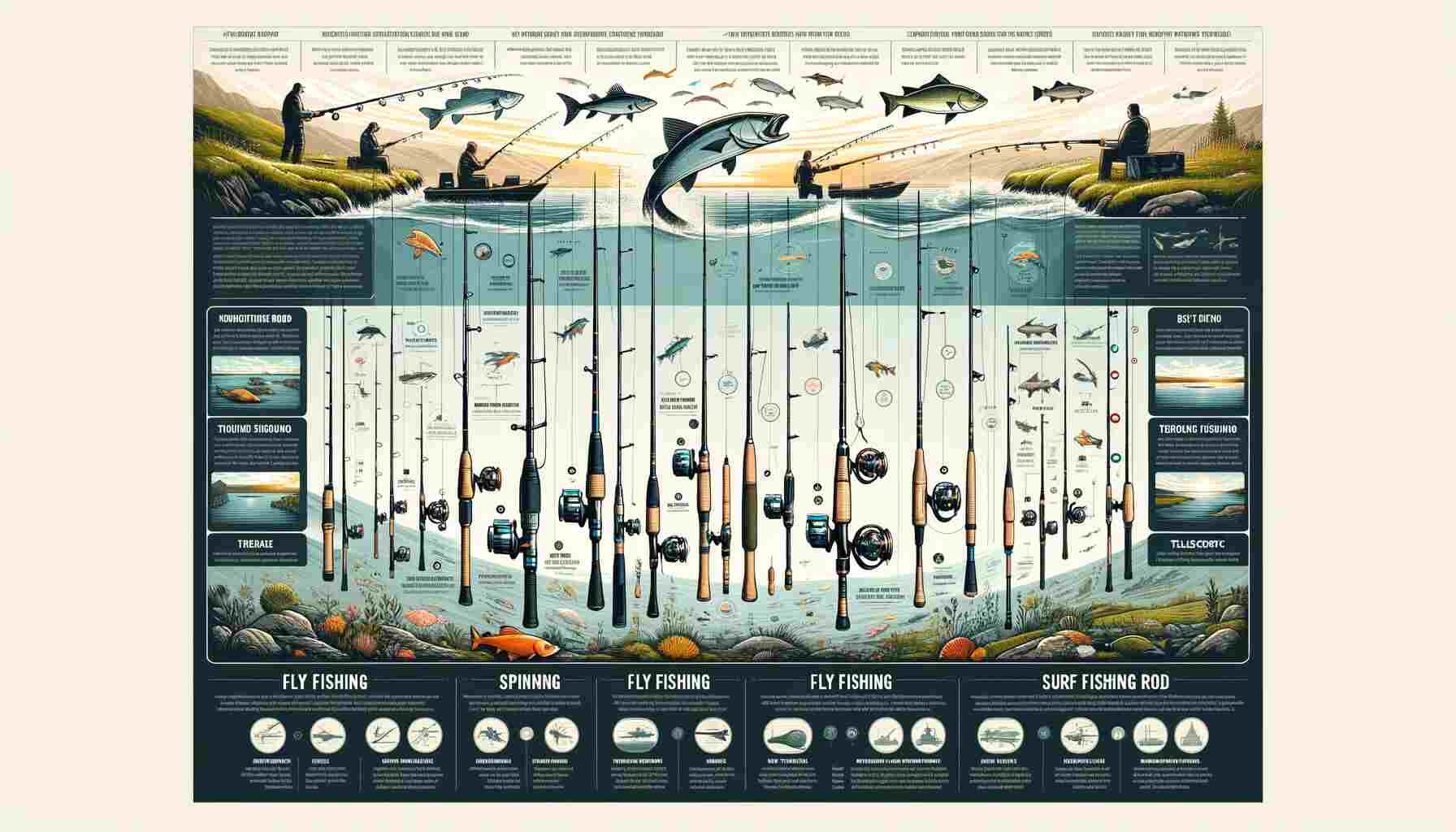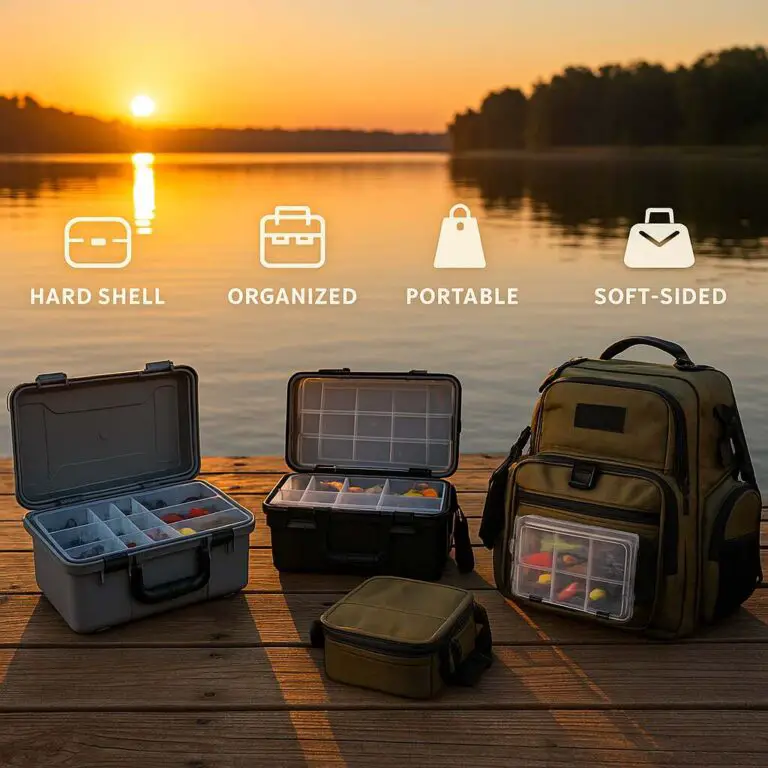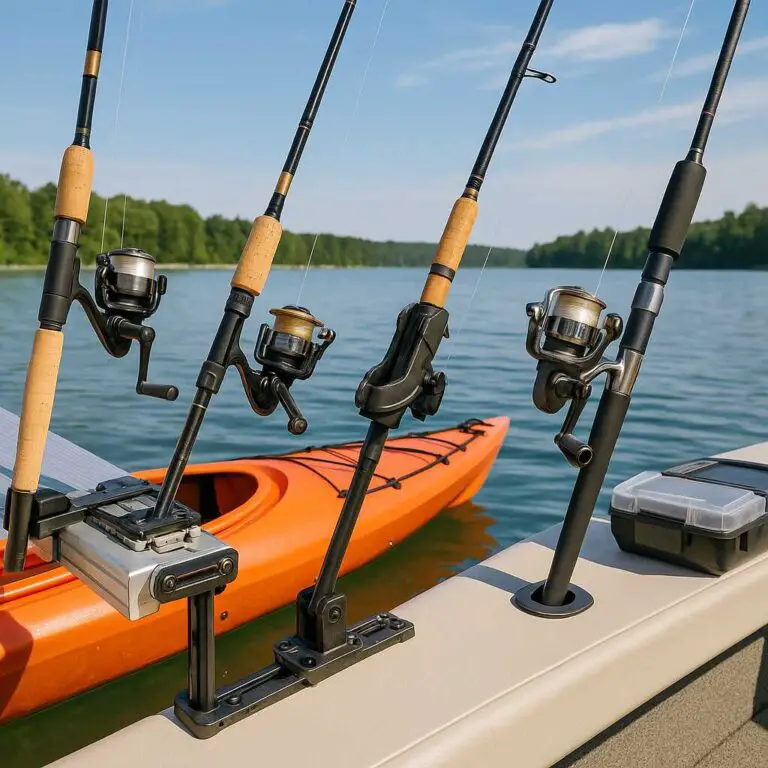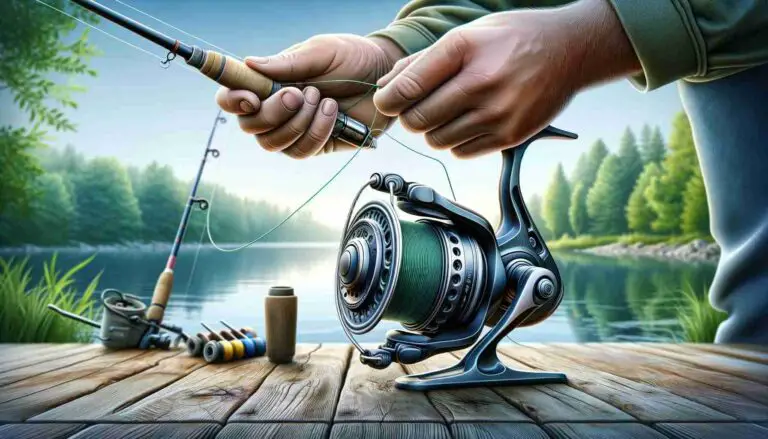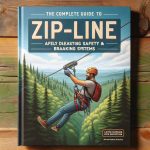Fishing rods are the essential tools of anglers, crafted with precision to match various fishing techniques, species, and environments. Understanding the different types of fishing rods available and their specific uses can significantly enhance your fishing experience, whether you’re a novice angler or a seasoned pro.
Understanding Fishing Rods
Fishing rods serve as the primary link between an angler and their catch. They come in a wide array of designs, lengths, materials, and actions, each tailored to specific fishing styles and conditions. Whether you’re casting in freshwater streams, trolling in the open ocean, or fly fishing in remote rivers, selecting the right fishing rod is crucial for success.
Components of a Fishing Rod
Before delving into the various types of fishing rods, let’s first understand the key components that make up these indispensable tools:
- Blank: The main body of the fishing rod, typically made of materials such as fiberglass, graphite, or a composite blend.
- Handle: The part of the rod held by the angler, usually made of cork, foam, or EVA (ethylene-vinyl acetate) for a comfortable grip.
- Reel Seat: The component where the fishing reel is attached to the rod, providing stability and support.
- Guides: Small loops or rings mounted along the length of the rod to guide the fishing line and prevent tangling during casts and retrieves.
- Tip: The thinnest and most flexible part of the rod, responsible for detecting bites and transmitting the angler’s movements to the lure or bait.
Fishing Rod Types and Uses Chart
Fishing rods can be broadly categorized based on various factors such as fishing technique, target species, and environmental conditions. Here are some of the most common types:
| Rod Type | Skill Level | Advantages | Limitations | Ideal Use Cases |
|---|---|---|---|---|
| Casting Rods | Intermediate to Advanced | Enhanced casting distance, accuracy, and control | Potential for tangled lines, higher cost | Targeting bass and other heavy species |
| Spinning Rods | Beginner to Advanced | User-friendly, versatile across species | Limited for heavy lines, may not suit children | Versatile for various fishing styles |
| Baitcasting Rods | Intermediate to Advanced | Strong backbone, handles heavy lines and lures | Requires skill for casting, may not suit beginners | Precision casting with heavy lures |
| Trolling Rods | Novice to Expert | Efficient for multiple lines, specialized for trolling | Less versatile outside of trolling | Trolling in larger bodies of water |
| Boat Rods | Novice to Expert | Durable for heavier catches, suitable length | Bulky and heavy to handle, not ideal for children | Deep sea fishing from a boat |
| Surf Rods | Novice to Expert | Long casting range, handles larger species | Cumbersome to transport, less suited for small waters | Surfcasting along beaches |
| Fly Fishing Rods | Intermediate to Expert | Delicate presentations, long-distance casting | Requires skill and practice, limited to fly fishing | Fly fishing in rivers and streams |
| Ice Fishing Rods | Beginner to Expert | Compact for ice shelters, minimal casting | Limited to ice fishing, specialized for smaller fish | Ice fishing on frozen lakes |
| Telescopic Rods | Beginner to Advanced | Portable and affordable, versatile for many species | Prone to damage if mishandled, limited for heavy fish | Backpacking and travel fishing |
This table offers a unique perspective by framing the advantages, limitations, and ideal use cases of each type of fishing rod in a concise and informative manner.
Choosing the Right Fishing Rod
Selecting the right fishing rod depends on several factors, including your preferred fishing technique, target species, fishing environment, and personal preferences. Here are some tips to help you make an informed decision:
- Identify Your Fishing Style: Determine the fishing techniques you’ll be using most frequently, whether it’s casting, trolling, jigging, or fly fishing.
- Consider Your Target Species: Match your rod to the size and behavior of the fish you’ll be targeting. Lighter rods are suitable for smaller species and finesse fishing, while heavier rods are necessary for battling larger game fish.
- Assess Environmental Conditions: Consider the fishing environment, including water depth, current, wind, and terrain. Choose a rod that can handle the specific challenges posed by your fishing location.
- Test Different Rods: Whenever possible, visit a tackle shop or participate in demo days to test out different rods and get a feel for their action, sensitivity, and ergonomics.
- Invest in Quality: While budget constraints are understandable, investing in a high-quality fishing rod can significantly improve your fishing experience and longevity. Look for reputable brands known for their craftsmanship and customer support.
- Seek Expert Advice: Don’t hesitate to consult with other experienced anglers, guides, or tackle shop staff for recommendations and insights based on their firsthand knowledge and expertise.
FAQs
1. How do I properly maintain my fishing rod to ensure its longevity?
- Answer: Regular maintenance includes cleaning the rod with soap and water, checking for and repairing any damaged guides, applying lubricant to reel seats, and storing the rod in a dry, cool place away from direct sunlight.
2. Can I use the same fishing rod for both saltwater and freshwater fishing?
- Answer: While some rods can be used in both environments, it’s important to consider the corrosion resistance of materials for saltwater use. Always rinse your rod with fresh water after saltwater use to prevent corrosion.
3. How does rod action impact my fishing technique?
- Answer: Rod action (the point where a rod bends) affects casting distance, sensitivity, and the hook-setting power. Fast-action rods bend near the tip, offering better sensitivity and hook setting, while slow-action rods bend closer to the handle, providing more casting distance but less sensitivity.
4. What is the difference between rod power and rod action?
- Answer: Rod power refers to the rod’s resistance to bending, essentially its stiffness, while rod action describes where along the rod’s length the bend occurs. Power affects the weight of lure and line strength you can use, and action influences casting and fighting fish.
5. How do I choose the right line weight for my fishing rod?
- Answer: Match the line weight to your rod’s specifications. Using a line too heavy can overload and break the rod, while too light a line might not effectively cast or handle the lure. Refer to the rod’s line weight recommendations typically printed near the handle.
6. What are the benefits of custom-built fishing rods?
- Answer: Custom rods can be tailored to your specific fishing needs, preferences for length, power, action, and aesthetics. They can offer a better fit for your fishing style, potentially enhancing performance and comfort.
7. How do I select the right reel for my fishing rod?
- Answer: The reel should match the rod’s type (casting, spinning, etc.) and balance well with the rod’s weight and specifications. Consider the reel’s gear ratio, drag system, and capacity for the line weight and length you plan to use.
8. What should I do if my rod breaks or the guides are damaged?
- Answer: Some breaks and damage can be repaired, especially if they are near the tip or involve a guide. Check if the rod is under warranty for replacement or repair. For minor issues, repair kits are available, but significant damage might require professional repair or replacement.
9. How can I test a fishing rod’s action and power before purchasing?
- Answer: When possible, physically flex the rod by applying pressure to the tip while holding the base, or if in a store, ask to set up a reel and simulate casting. Look for demo days or rental options to test the rod on the water.
10. Are there eco-friendly or sustainable fishing rod options?
- Answer: Yes, some manufacturers focus on sustainability by using recycled materials, eco-friendly resins, and processes that reduce environmental impact. Research brands that prioritize these values if sustainability is a concern for you.
These FAQs aim to complement the information provided in the article, offering guidance on maintenance, selection, and usage of fishing rods to both novice and experienced anglers.
Conclusion
Fishing rods are indispensable tools for anglers of all skill levels, offering a wide range of options tailored to specific fishing techniques, species, and environments. By understanding the different types of fishing rods available and their respective uses, you can enhance your fishing experience and maximize your chances of success on the water. Whether you’re casting for trout in a mountain stream, trolling for tuna in the open ocean, or ice fishing for walleye on a frozen lake, choosing the right fishing rod is essential for unlocking the full potential of your angling adventures.
Remember to prioritize quality, match your rod to your fishing style and target species, and seek advice from knowledgeable sources to make informed decisions. With the right fishing rod in hand, you’ll be well-equipped to tackle any angling challenge and create unforgettable memories on the water.

